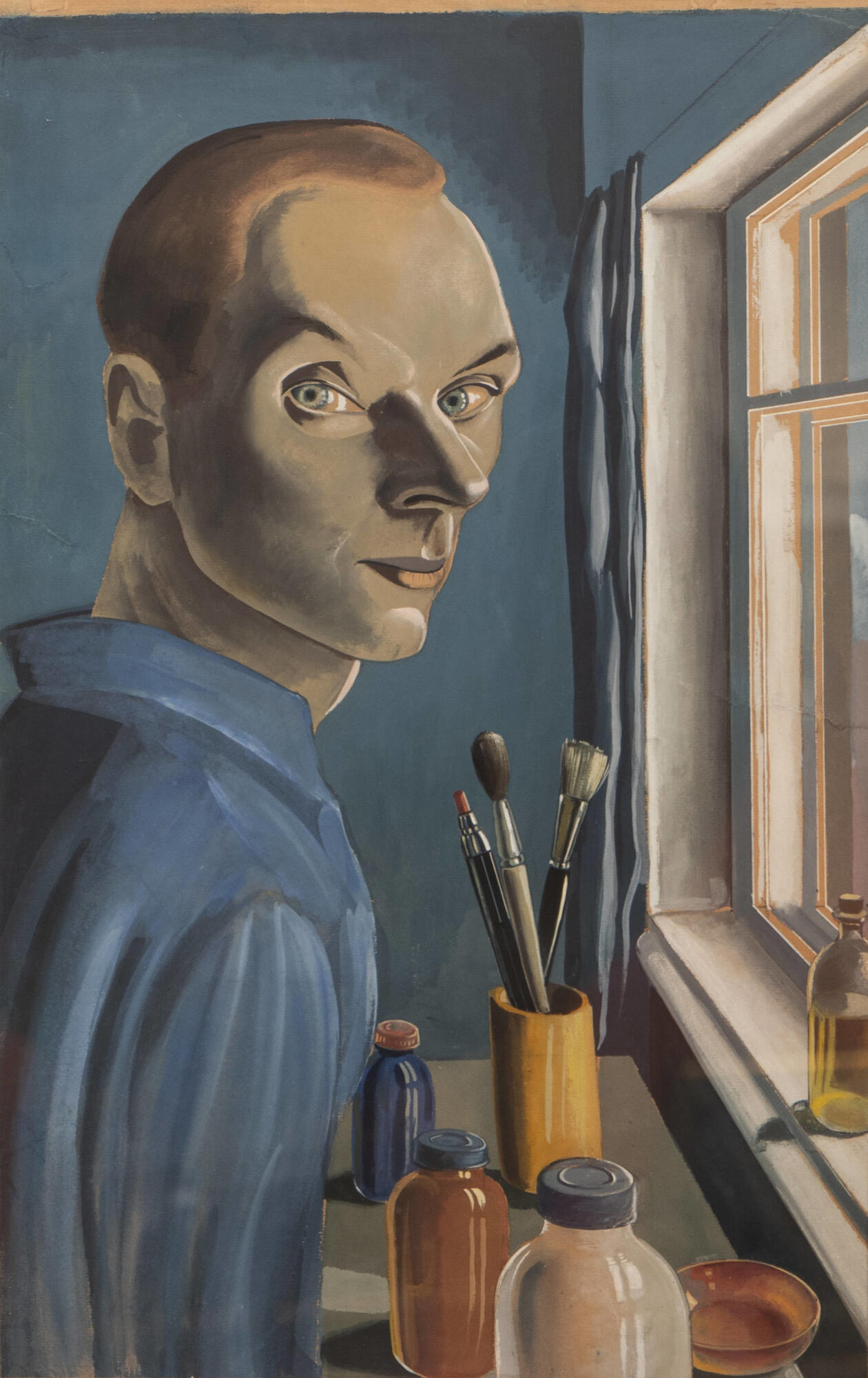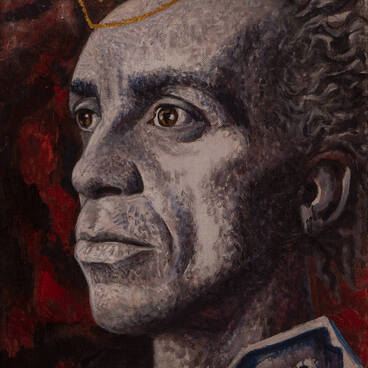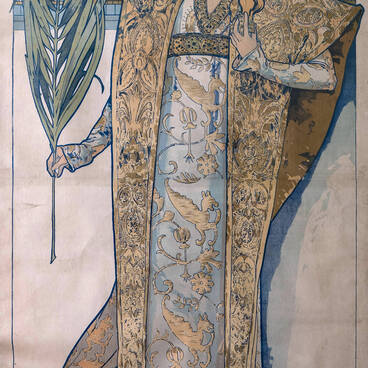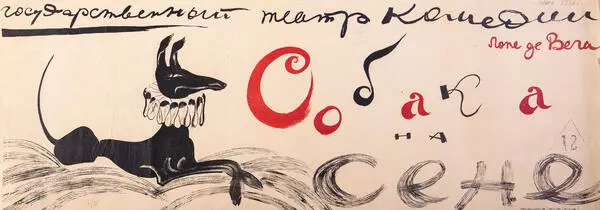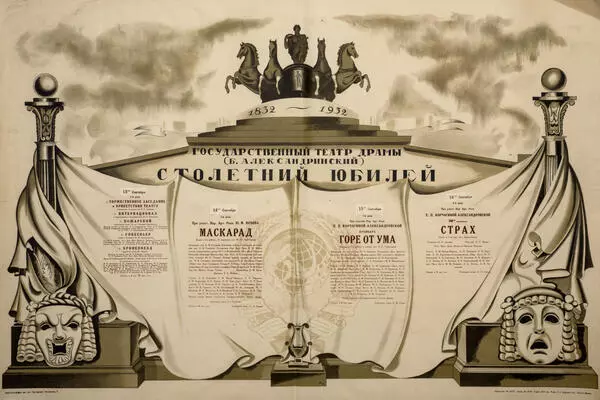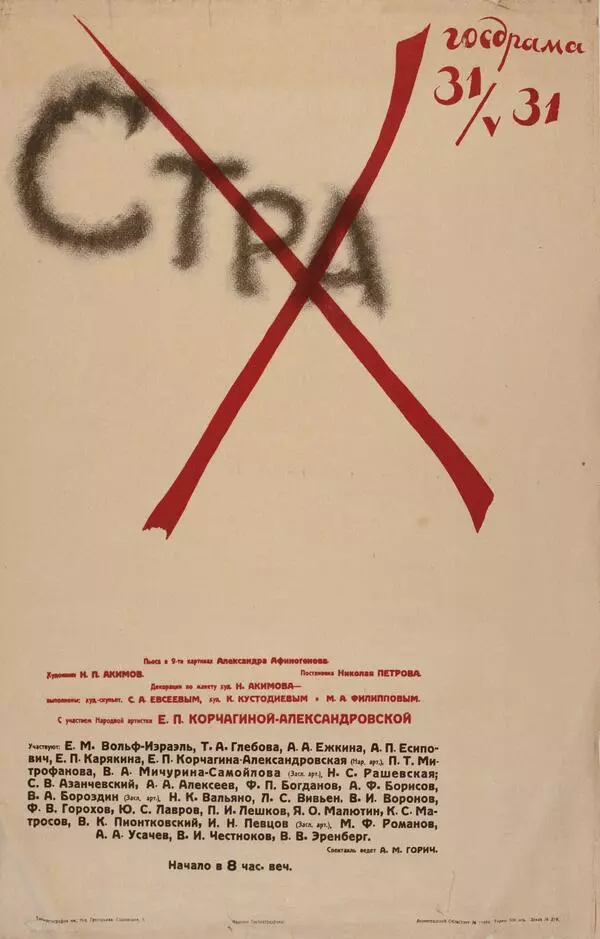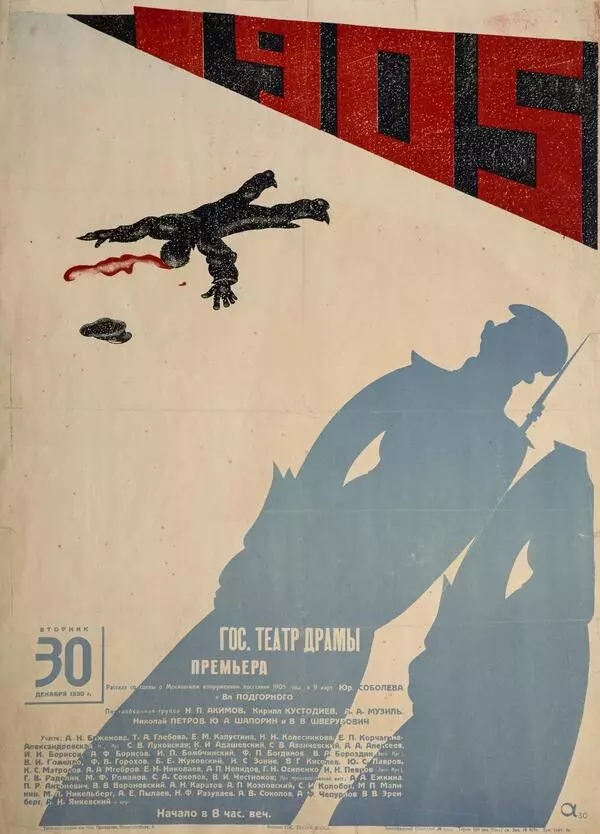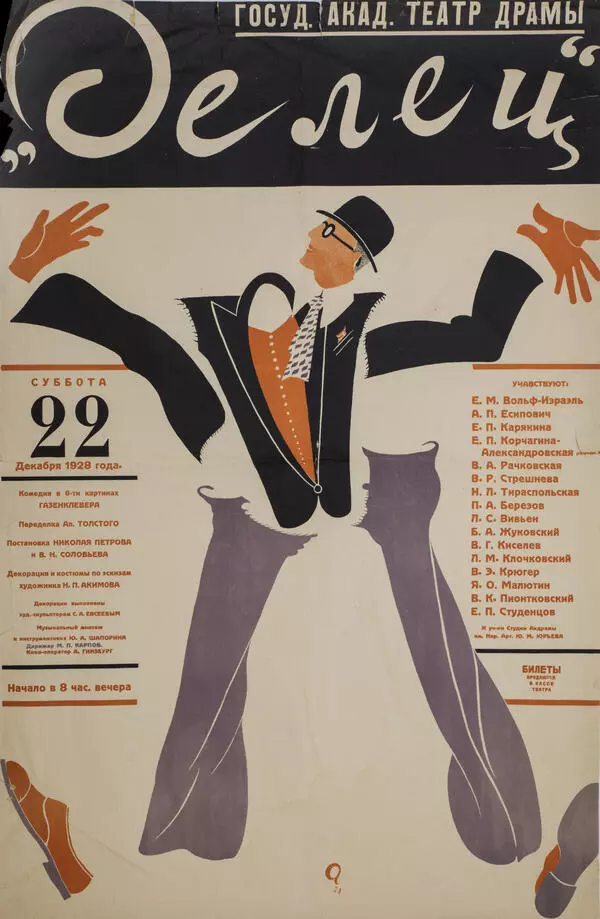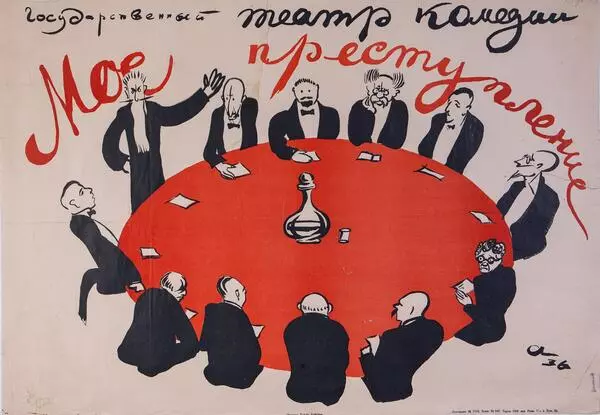The theater director and scenic designer Nikolay Pavlovich Akimov (1901–1968) was an illustrator first and foremost. He viewed the world through the lens of romantic irony that perfected the reality. As a young man, he studied under the painters Alexander Yakovlev, Vasily Shukhaev and Mstislav Dobuzhinsky who belonged to the artistic movement called “Mir iskusstva” (World of Art). Stylization, elements characteristic of Italian Renaissance, clarity of image and use of chiaroscuro to create volume can also be found in the works by Nikolay Akimov.
Although Nikolay Akimov was first introduced to theater as a graphic designer, in 1932 he made a debut as a director. Three years later, the aspiring director took up an offer to become the head of the Leningrad Theater of Satire and Comedy, which was renamed the Comedy Theater.
Along with Akimov, the theater welcomed actors Yelena Junger, Irina Zarubina, Alexander Benyaminov, Sergey Filippov and Vladimir Uskov, and all of them would eventually become the theater legends. The Russian writers Mikhail Zoshchenko and Mikhail Lozinsky were among those who collaborated with Akimov. The plays called “The Shadow”, “The Dragon”, and “An Ordinary Miracle” were created by Yevgeny Schwartz exclusively for the Comedy Theater.
During the siege of Leningrad and the evacuation, Akimov never left his theater. 16 plays were premiered during that period. However, after the war the situation at the theater had to change because of the complicated political climate in the country. In 1949, Akimov had to leave the theater he was heading following allegations of pro-Western stance and formalism.
The Self-Portrait of 1949 is considered an autobiographical piece. The painting reflects the way the director was coping with having to leave the theater. The same year as the state was fighting the idea of cosmopolitanism, he depicted himself surrounded by the attributes of his art.
It was only in 1956, seven years after the portrait had been created, that Akimov was brought back as the director of the Comedy Theater.
Although Nikolay Akimov was first introduced to theater as a graphic designer, in 1932 he made a debut as a director. Three years later, the aspiring director took up an offer to become the head of the Leningrad Theater of Satire and Comedy, which was renamed the Comedy Theater.
Along with Akimov, the theater welcomed actors Yelena Junger, Irina Zarubina, Alexander Benyaminov, Sergey Filippov and Vladimir Uskov, and all of them would eventually become the theater legends. The Russian writers Mikhail Zoshchenko and Mikhail Lozinsky were among those who collaborated with Akimov. The plays called “The Shadow”, “The Dragon”, and “An Ordinary Miracle” were created by Yevgeny Schwartz exclusively for the Comedy Theater.
During the siege of Leningrad and the evacuation, Akimov never left his theater. 16 plays were premiered during that period. However, after the war the situation at the theater had to change because of the complicated political climate in the country. In 1949, Akimov had to leave the theater he was heading following allegations of pro-Western stance and formalism.
The Self-Portrait of 1949 is considered an autobiographical piece. The painting reflects the way the director was coping with having to leave the theater. The same year as the state was fighting the idea of cosmopolitanism, he depicted himself surrounded by the attributes of his art.
It was only in 1956, seven years after the portrait had been created, that Akimov was brought back as the director of the Comedy Theater.
